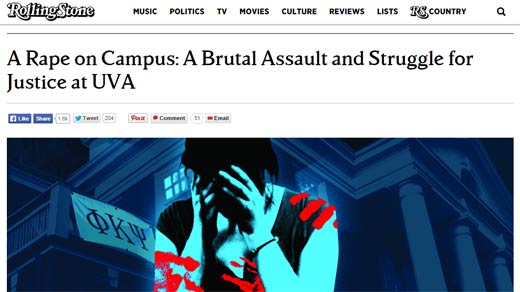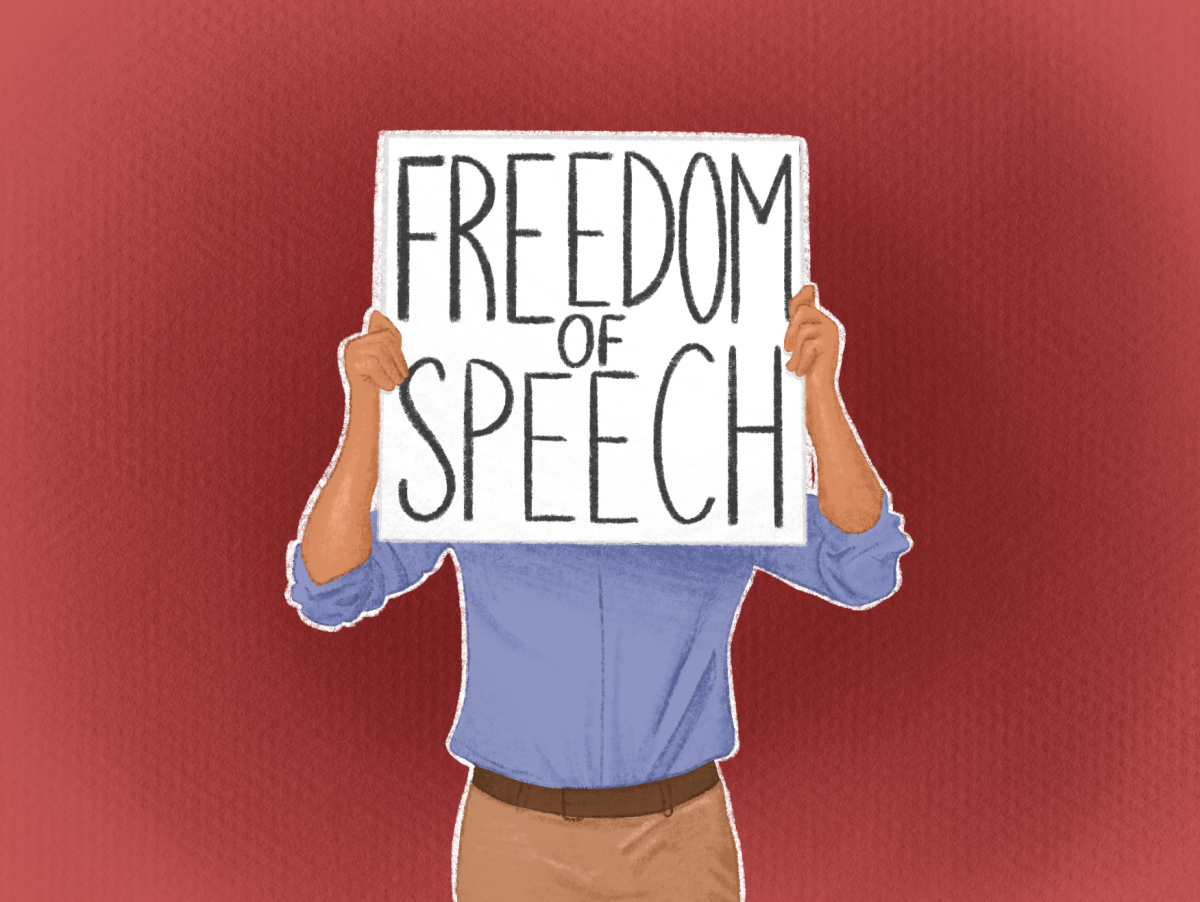When Rolling Stone published the article “A Rape on Campus: A Brutal Assault and Struggle for Justice at UVA” in November of 2014, the gasps of its 2.7 million online readers were almost audible. As women, siblings, friends, parents, teachers and college students, we were shocked and horrified as we read a disturbingly detailed account of freshman “Jackie’s” gang rape at a University of Virginia (UVA) fraternity house. We condemned the actions of the three friends detailed in the story who encouraged Jackie not to seek legal action, and we cringed as we thought of how easily the young girl was put into this terrifyingly dangerous situation.
Rolling Stone was wrong. On April 5, the Columbia University Graduate School of Journalism released a report in which every aspect of the article was criticized and the mistakes of the reporters and editors of Rolling Stone detailed and explained. The fact-checking operations of the magazine were ripped apart and the higher-ups of the publication put on blast. Later that day, the original article was retracted in its entirety.
There is no ignoring the journalistic lapses, the failure to operate as a credible and legitimate provider of news and the lack of fact-checking that accompanied “A Rape on Campus.” We at The News recognize this and, as a news source, will strive to learn from the mistakes of the magazine and make no excuses for what constituted Columbia’s report to call the story a “casualty.”
However, “A Rape on Campus” is perhaps the most important story to come out of the magazine in recent memory for reasons other than the obvious. No, Jackie was not raped by seven men at the UVA’s Phi Kappa Psi. No, UVA upperclassman “Drew” did not lure a freshman girl into a fraternity bedroom where she was brutally sexually assaulted. No, UVA’s administration did not fail to properly investigate the assault, which never happened. Yes, there is a hidden culture of sexual violence at universities across the United States.
Even if every aspect of Rolling Stone’s article is fabricated, the reason we were so shocked and horrified as we read the story was because it was so believable. We were saddened and angered by the tale, but we believed it. It wasn’t completely absurd that this could have happened. It wasn’t far-fetched that a university could choose to push something like this under the rug. What gave “A Rape on Campus” its traction is that it underscored an issue that does exist – in all of its gruesome realities.
A paper cited by Columbia’s report and co-authored by University of Massachusetts Boston professor David Lisak says the rate of false rape allegations is between 2 and 8 percent.
The failure of Rolling Stone threatens a major setback in how we, on college campuses and as students, handle sexual assault. Rather than raise concern about on-campus assaults and how they are handled at an administrative level, the article stands instead to foster the idea that women often invent rape allegations. This idea is one of the most dangerous we can possibly pay attention to. We must ensure that it is positive conversation, rather than accusation, that results from this “journalistic failure.”
There is clearly a need for revision of Rolling Stone’s fact-checking and journalistic processes and for a national discussion among journalists for how to best vet and report when it comes to stories concerning sexual assault. However, it is just as important that the stories continue to be written.
No, Jackie’s story was not true, but yes – universities mishandle rape cases, yes – college parties often result in sexual assault and yes – legitimate victims are too often silenced.









